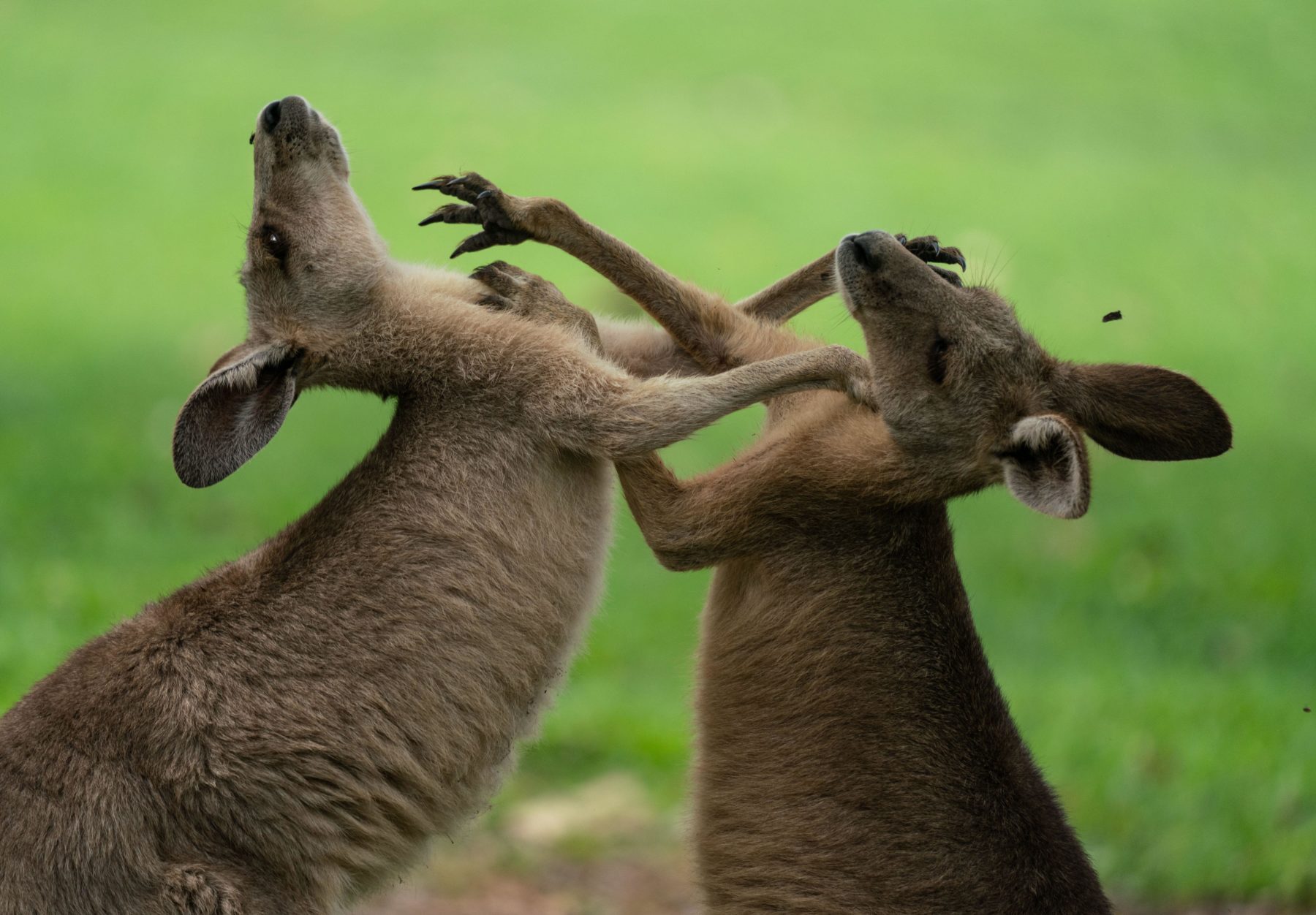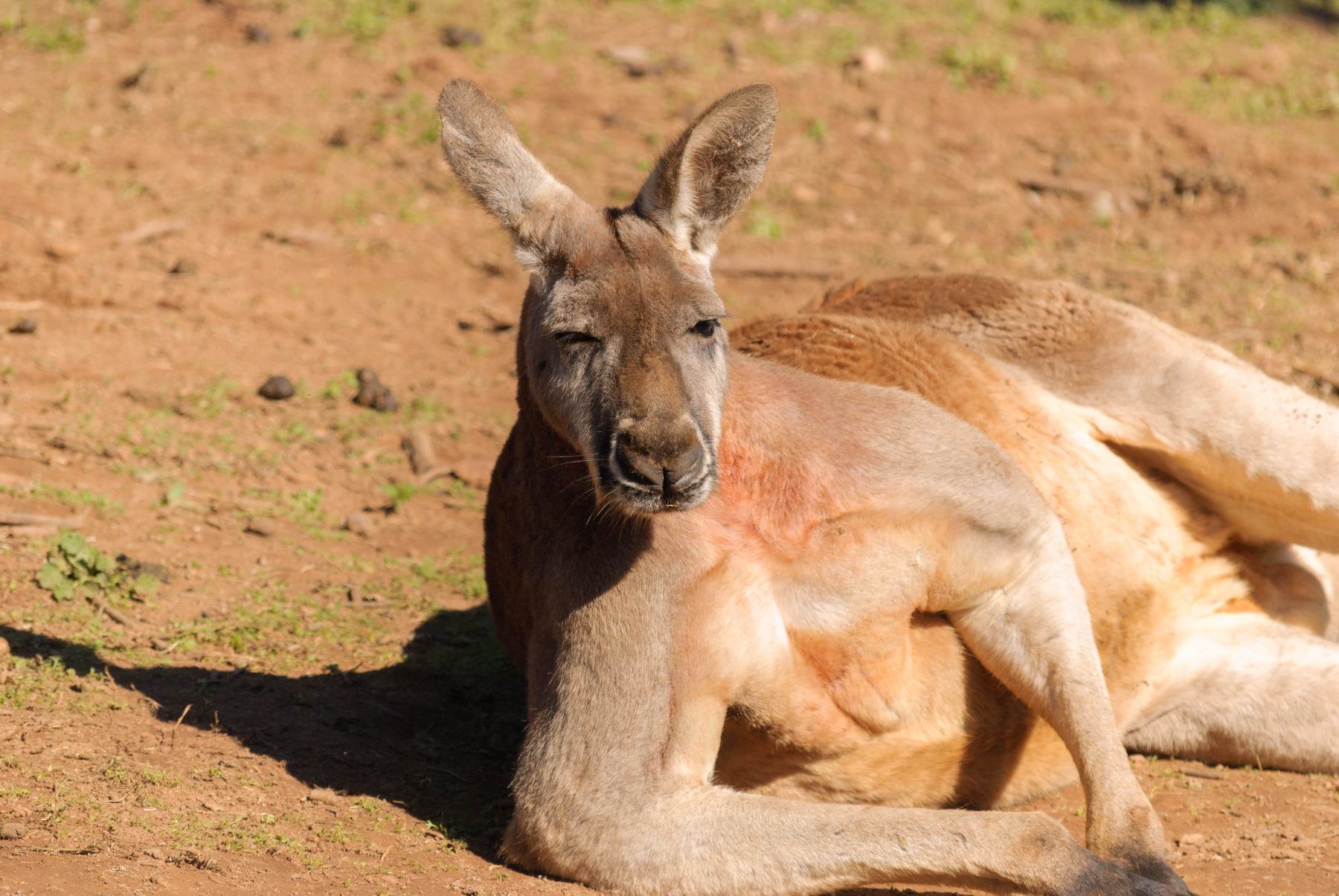Why roos attack and what you should do to avoid it

On Sunday, a 77-year-old man was attacked by a large male kangaroo and subsequently died from his injuries. It’s believed the roo was a pet, kept on the man’s Redmond, WA, property. It was euthanased at the scene because it was deemed a threat to paramedics who were attempting to treat the man.
While this is the first death from a kangaroo attack in WA since 1936, human and roo interactions are becoming increasingly frequent across the country as residential developments encroach on prime kangaroo habitat.
So, with this in mind, what should you do if you’re approached by a roo?
Dr Mark Eldridge, Principal Research Scientist and macropod expert at the Australian Museum says while kangaroo attacks on humans are a relatively rare occurrence, males spend much of their life sparring and fighting in order to maintain their position in the social hierarchy.

“In a mob every kangaroo knows its place and periodically lower-ranked males challenge the top kangaroo for access to females, resources, etc,” Mark says.
“They’re extremely large and powerful animals with robust weaponry at their disposal. Their claws are long on both their front and hind legs, and on the latter they have very long toenails that are quite blade-like. They’re designed to injure.”
“They display grappling, biting and kicking behaviours and balance on their tail to kick out simultaneously with both their back legs. They use their foreclaws to try and injure their opponents eyes – when you watch males sparring you’ll see they throw their heads right back to avoid damage to their faces.

“Kangaroos also have specially reinforced skin on their chest and abdomen, which can cope with a lot more pounding than we humans.”
While all this is part of normal roo behaviour, Mark says there are clear signs to look for if you come across a kangaroo, particularly a large male, in the wild.
“People think they’re harmless and cute, but because of their size males aren’t,” he says. “What people often do wrong is inadvertently issue a challenge to a kangaroo. If a male stands up and looks at a person, the last thing you should do is walk directly towards it. In fact, you should do the opposite: slowly move back from it or turn and walk away at an angle. And if he starts pawing the ground, urinating, pulling up grass and rubbing it on his chest or standing on tippy-toes to make himself taller, you best get out of there immediately. If you are attacked the best thing to do is to drop to the ground, curl up in a ball and protect your face.”
Hand raised roos, such as the one in WA, can be problematic as they mature says Mark.
“Males can get quite aggressive towards people. Maybe they get fixated on them because they’re seen as part of their mob, or they’ve lost their fear of humans and want to interact with them, and then they hit puberty and the hormones kick, behaviours get confused, they can become aggressive and attack.
“These are male macropods that miss out on natural socialisation – they’re not subject to the nuances and lessons of being part of a mob.”

Things become even more complicated when humans and their dogs interact with kangaroos.
“It’s a really bad combination.There’s a long history of dogs and kangaroos in this country and kangaroos are very wary of them. Dingoes have been their predator for thousands of years and before that the thylacine, which looked dog-like.
“If dogs chase kangaroos, some roos, especially males, will turn and take the fight up to them. So, a domestic dog might find itself under attack from a kangaroo and its owner will rush in to save it and end up being badly injured, or worse. And with human development expanding into kangaroo habitat, it’s likely to happen more and more often.”
Hayley Shute, Life Sciences Manager at the Australian Reptile Park says she’s not surprised that male kangaroos can kill a man given their nature, size and strength.
“I don’t have the details of this specific case so I wouldn’t like to speculate, but it’s definitely not surprising that a male kangaroo could cause injuries such as this because they are so strong,” she says.
“I’ve seen it, male kangaroos taking each other on and fighting. Their nickname is the boxing kangaroo and that’s because they do kick. Their claws are really big, and they’re muscly.
“Their bodies are built for this. They’re built for boxing and they’re built for battle in some cases.”






